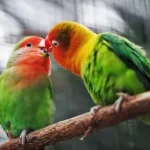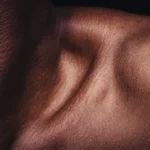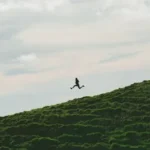- Taxidermy dreams symbolize personal growth, fear of change, repressed desires and emotions, and a desire to escape from responsibilities and real-life issues.
- The preservation aspect of taxidermy dreams represents a desire for permanence and stability, while the transformation aspect signifies a need for personal growth and change.
- Taxidermy dreams may reflect a subconscious desire for emotional detachment and a fear of vulnerability, as well as a longing to hold onto past experiences or relationships.
- Understanding the symbolism and meaning behind taxidermy dreams requires exploration of personal associations, seeking emotional support, keeping a dream journal, and considering other factors such as context and dream scenarios.
Taxidermy dreams are mysterious and thought-provoking, leaving individuals with a sense of perplexity upon waking. The symbolism behind these dreams is deeply rooted in the preservation and transformation of life. As we explore the fascinating world of taxidermy dreams, we delve into the psychological significance they hold and the common symbols that appear within them. Understanding the complexities of taxidermy dreams can provide insight into our subconscious thoughts, emotions, and desires. In this article, we will unravel the symbolism, interpret different dream scenarios, and explore the psychological meanings associated with taxidermy dreams. Whether you have experienced these dreams yourself or are simply curious about their significance, join us on this journey of self-discovery as we explore the hidden depths of taxidermy dream symbolism.
Symbolism of Taxidermy Dreams

1. Understanding Taxidermy Dreams
Taxidermy dreams are unique and often perceived as unsettling due to the unusual subject matter. These dreams involve the preservation and transformation of animals, which can have deep symbolic meanings. Understanding the symbolism behind taxidermy dreams can provide valuable insights into one’s subconscious thoughts and emotions.
In taxidermy, the process of preserving animal remains allows them to be displayed and admired even after death. In the context of dreams, the symbolism of preservation can represent a desire for immortality or a need to hold onto something or someone. It may signify the dreamer’s longing for permanence and the fear of losing important aspects of their life.
The preservation aspect of taxidermy dreams can also highlight the dreamer’s longing for nostalgia and the past. It may reflect a desire to preserve memories or beliefs that have shaped their identity. This symbolism suggests a need to hold onto the familiar and avoid the uncertainties of change.
Taxidermy involves the transformation of animal remains into lifelike displays. This symbolism of transformation in taxidermy dreams can relate to the dreamer’s own personal growth and change. It may signify a desire for self-improvement or a need to evolve into a better version of oneself.
Alternatively, the transformation aspect of taxidermy dreams can also represent a fear of change or the feeling of being stuck in a certain situation. The dreamer may be struggling with embracing new experiences or letting go of the past. This symbolism suggests a need for the dreamer to examine their resistance to change and consider the benefits that transformation can bring.
Taxidermy involves the detachment of the animal’s physical form from its emotions and life force. In the context of taxidermy dreams, this symbolism of emotional detachment can reflect the dreamer’s subconscious need to disconnect from their own emotions. It may indicate a desire to suppress or avoid certain feelings, whether positive or negative.
The need for emotional detachment in taxidermy dreams can also signify the dreamer’s efforts to protect themselves from emotional pain or vulnerability. It may serve as a defense mechanism against getting hurt or experiencing loss. This symbolism suggests a need for the dreamer to explore their emotional state and find healthier ways to cope with their feelings.
By understanding the symbolism behind taxidermy dreams, individuals can gain valuable insights into their thoughts, emotions, and desires. Exploring the different scenarios that can occur in taxidermy dreams can provide further understanding and interpretation.
2. Symbolism of Preservation
The preservation of taxidermy holds significant symbolism in dreams. This symbolism represents the desire to maintain something or someone in its current state, preventing its natural decay or the passing of time. It suggests a need for permanence and stability in one’s life.
In taxidermy, the process involves preserving the physical form of an animal through various techniques, such as stuffing and mounting. When this preservation is seen in dreams, it often indicates a deep-rooted desire to hold onto something or someone, fearing the inevitable passage of time and the potential loss or change that it brings.
This symbolism can also represent the preservation of memories or emotions. It may suggest a longing to hold onto past experiences or relationships, not wanting them to fade away or be forgotten. The act of taxidermy is a way to keep something alive in a visual and physical sense, even after its life has ended. In a dream, this symbolism can reflect a similar desire to hold onto the past and keep it alive in some way.
The preservation aspect of taxidermy can also symbolize the desire for control. By preserving something, one can control its appearance, its state, and its presence in their life. This can stem from a fear of losing control or a need for stability and order in one’s surroundings.
The symbolism of preservation in taxidermy dreams is a complex and multifaceted one. It speaks to the human desire for permanence, control, and the fear of losing something or someone. It is important to delve deeper into the specific details and emotions surrounding the dream to gain a more accurate interpretation.
3. Symbolism of Transformation
The symbolism of transformation in taxidermy dreams represents a profound change or metamorphosis occurring in one’s life. This symbolism is often associated with personal growth, self-discovery, and the evolution of one’s identity.
When we think about taxidermy, we are reminded of the process of preserving and transforming deceased animals into lifelike representations. This process involves removing the animal’s innards, stuffing its body, and meticulously reconstructing its physical appearance. Similarly, in our dreams, taxidermy represents a transformative process that takes place within ourselves.
This transformation can manifest in various ways, such as personal development, changes in beliefs or values, or even the shedding of old habits or emotions. It signifies a desire for self-improvement and an urge to reinvent oneself.
In some cases, taxidermy dreams may symbolize the need to preserve or hold onto a particular aspect of our lives. It may reflect a deep-rooted desire to keep things the way they are, fearing the uncertainty or instability that change may bring. This symbolism is closely tied to the notion of holding onto the past and resisting any form of transformation.
Alternatively, taxidermy dreams can also represent the acceptance of life’s inevitable changes and the willingness to adapt and transform. It signifies the importance of embracing new experiences, letting go of the old, and embracing the beauty in impermanence.
The symbolism of transformation in taxidermy dreams invites us to examine and evaluate the changes occurring in our lives. It prompts us to reflect on our personal growth, embrace new opportunities, and let go of what no longer serves us.
Taxidermy involves the detachment of the animal’s physical form from its emotions and life force. In the context of taxidermy dreams, this symbolism of emotional detachment can reflect the dreamer’s subconscious need to disconnect from their own emotions. It may indicate a desire to suppress or avoid certain feelings, whether positive or negative.
The need for emotional detachment in taxidermy dreams can also signify the dreamer’s efforts to protect themselves from emotional pain or vulnerability. It may serve as a defense mechanism against getting hurt or experiencing loss. This symbolism suggests a need for the dreamer to explore their emotional state and find healthier ways to cope with their feelings.
By understanding the symbolism behind taxidermy dreams, individuals can gain valuable insights into their thoughts, emotions, and desires. Exploring the different scenarios that can occur in taxidermy dreams can provide further understanding and interpretation.
4. Need for Emotional Detachment
In taxidermy dreams, the need for emotional detachment can symbolize a desire to distance oneself from intense emotions or to suppress feelings that may be overwhelming. This need for emotional detachment can manifest in various ways within the context of taxidermy symbolism.
One possible interpretation is that taxidermy represents a way to preserve memories or experiences as a means of emotional self-preservation. By creating preserved representations of animals, individuals in the dream may be attempting to freeze a certain emotional state or experience, allowing them to maintain control over their feelings.
This need for emotional detachment could also indicate a fear of vulnerability or a reluctance to fully engage with emotions. The act of taxidermy involves the careful preservation of an animal’s physical form, while its life force and vitality are lost. This may suggest a subconscious desire to safeguard oneself from the inherently messy and unpredictable nature of emotions.
Additionally, taxidermy can be seen as a symbol of transformation. The process of turning a once-living creature into a stuffed object captures the idea of preserving something by fundamentally changing its nature. This symbolism may represent an unconscious desire to undergo a similar transformation in one’s own life, perhaps to detach from past experiences or emotions and move forward in a more controlled and calculated manner.
The need for emotional detachment in taxidermy dreams may reflect a deep-seated fear of intimacy or connection. By viewing emotional attachments as something to be preserved and controlled, individuals in the dream may be trying to protect themselves from the potential pain and heartache that can come from close relationships.
The need for emotional detachment in taxidermy dreams suggests a complex relationship with emotions and the desire to maintain control and stability. Understanding this symbolism can provide insight into one’s emotional state and help navigate the underlying fears and desires associated with intimacy and vulnerability.
Meaning of Taxidermy Dreams

Taxidermy dreams can provide valuable insights into our subconscious thoughts, emotions, and desires. These dreams often reflect personal growth, fear of change, repressed desires and emotions, and a desire to escape from daily responsibilities and real-life issues. Understanding the meaning behind taxidermy dreams can offer guidance and self-discovery. Let’s explore the different aspects of taxidermy dream interpretation.
1. Dreams as a Reflection of Personal Growth and Fear of Change
In taxidermy dreams, the preservation and transformation of animals symbolize personal growth and change. The desire to preserve certain qualities or memories suggests a fear of change or a longing for stability. These dreams may indicate that you are holding onto past experiences or relationships, preventing you from moving forward and fully embracing new opportunities.
The transformative aspect of taxidermy reminds us that change is a natural part of life. Embracing new experiences and letting go of the old is essential for personal growth. These dreams encourage you to examine your resistance to change and consider the positive impact that transformation can bring.
2. Repressed Desires and Emotions
Taxidermy dreams can also reveal repressed desires and emotions. The act of preserving animals in a lifelike form represents the need to distance oneself from intense emotions or experiences. It may indicate a desire to protect yourself from emotional pain or vulnerability.
If you dream of killing an animal or engaging in taxidermy yourself, it suggests that you are acting against your instincts or values, causing harm to a part of yourself. This dream serves as a reminder to change your behavior and align it with your true nature to preserve your emotional well-being.
3. Escape from Responsibilities and Real-Life Issues
In some taxidermy dreams, the desire to escape from daily responsibilities and real-life issues may be present. The unsettling nature of taxidermy can symbolize a longing for stability, control, and a break from challenging situations.
If you feel overwhelmed by your responsibilities or problems, these dreams may serve as a subconscious escape mechanism. They invite you to take a step back and examine the ways in which you can find balance in your life. It is important to identify healthy coping mechanisms and address the underlying issues rather than relying solely on avoidance tactics.
4. Desire for Permanence and Stability
The desire for permanence and stability is a common theme in taxidermy dreams. The preservation techniques used in taxidermy, such as stuffing and mounting, symbolize the need to hold onto something or someone. These dreams may indicate a fear of change or a desire for control over one’s life.
The symbolism of permanence and stability highlights the human need for consistency in an ever-changing world. It is important to find a balance between embracing new experiences and preserving the essence of what truly matters to you. These dreams encourage you to examine your relationship with change and seek stability through healthy means.
5. Conclusion
Taxidermy dreams offer deep insights into our subconscious thoughts, emotions, and desires. They reflect personal growth, fear of change, repressed desires and emotions, and a desire to escape from responsibilities and real-life issues. Understanding the meaning behind taxidermy dreams can guide us towards self-discovery and personal development. By analyzing these dreams within the context of our own experiences, we can gain valuable insights into our psyche and navigate towards a more fulfilling life journey.
Common Dream Scenarios

Dreams have a way of capturing our deepest emotions and desires, often presenting them in a surreal and symbolic manner. When taxidermy becomes a central theme in our dreams, it is essential to explore the symbolism and meanings behind these unique scenarios. In this section, we will delve into some common dream scenarios involving taxidermy and uncover their psychological significance.
1. Dreams featuring Taxidermy Animals
One common dream scenario involving taxidermy is encountering preserved animals. In these dreams, you may come across stuffed animals that have been lovingly crafted to resemble living creatures. The presence of taxidermy animals can hold several symbolic meanings:
- Preservation of Memories
Dreams featuring taxidermy animals often represent a desire to preserve precious memories or emotions associated with the past. Just as taxidermy allows us to physically hold onto something no longer alive, these dreams show a longing for permanence in our emotional connections. - Emotional Detachment
Taxidermy animals can also symbolize emotional detachment. By preserving animals in a static state, these dreams may reflect an unconscious need to distance ourselves from intense feelings or traumatic experiences. It is essential to explore any underlying emotions or fears that may be driving this desire for emotional distance. - Fears of Loss and Change
Dreaming of taxidermy animals can also reflect fears of losing someone or something significant in your life. The act of preservation serves as a protective mechanism against the natural decay and passing of time. These dreams may indicate a reluctance to let go or an unwillingness to accept change.
2. Dreams portraying the Process of Taxidermy
In some dreams, you may find yourself actively participating in the taxidermy process – perhaps observing or partaking in stuffing or mounting an animal. The symbolism associated with this scenario can shed light on personal growth and emotional transformation:
- Personal Transformation
Dreams depicting the taxidermy process often symbolize personal growth and transformation. Just as animals undergo a physical metamorphosis through taxidermy, these dreams suggest a desire for self-improvement and a need to evolve into a better version of oneself. It may be time to embrace change and embark on a journey of self-discovery. - Fear of Change
On the flip side, dreams involving the taxidermy process can also represent a deep-seated fear of change. The intricate process of preserving animals can serve as a metaphor for the hesitance to let go or fear of the unknown. These dreams may be urging you to confront your resistance to change and embrace new experiences. - Desire for Control
The taxidermy process can symbolize a desire for control over one’s environment and circumstances. In these dreams, you may feel a need to hold onto stability and avoid uncertainties. It is essential to recognize that control is often an illusion, and embracing the unpredictability of life can lead to personal growth and fulfillment.
3. Dreams about Being a Taxidermist
Dreams where you find yourself assuming the role of a taxidermist carry specific symbolism tied to emotions and self-perception:
- Emotional Detachment
Being a taxidermist in your dream may indicate a subconscious desire for emotional detachment. These dreams suggest a tendency to distance oneself from emotional situations or a fear of getting too attached to others. It is crucial to explore healthy ways of connecting with your emotions and building meaningful relationships. - Desire for Control and Stability
Assuming the role of a taxidermist signifies a yearning for stability, control, and permanence. These dreams reflect a deep-seated need for order in one’s surroundings. However, it is essential to recognize that life is fluid and embracing change can lead to personal growth and fulfillment.
Dreams are highly subjective, and their interpretations can vary based on personal associations and experiences. It is crucial to explore your emotions, reflect on your personal associations with taxidermy, and seek professional help if needed to gain a deeper understanding of your dreams.
Interpreting Taxidermy Dreams: Psychological and Emotional Analysis

Dreams about taxidermy can be mysterious and thought-provoking, leaving individuals with a sense of perplexity upon waking. The symbolism behind these dreams is deeply rooted in the preservation and transformation of life. As we explore the fascinating world of taxidermy dreams, we delve into the psychological significance they hold and the common symbols that appear within them. Understanding the complexities of taxidermy dreams can provide insight into our subconscious thoughts, emotions, and desires. In this article, we will unravel the symbolism, interpret different dream scenarios, and explore the psychological meanings associated with taxidermy dreams. Whether you have experienced these dreams yourself or are simply curious about their significance, join us on this journey of self-discovery as we explore the hidden depths of taxidermy dream symbolism.
1. The Role of Personal Associations in Dream Interpretation
When it comes to analyzing taxidermy dreams or any dreams for that matter, personal associations play a significant role in understanding their meaning. Dreams are highly personal and can be influenced by our individual experiences, emotions, and beliefs. Reflecting on your own unique associations with taxidermy can provide valuable insights into the symbolism in your dreams.
Consider what taxidermy represents to you personally. Does it evoke feelings of fascination, discomfort, or nostalgia? Is it associated with specific memories or emotions? Understanding your own feelings and experiences related to taxidermy will help you interpret the symbolism in your dreams more accurately.
For example, if you have positive associations with taxidermy and view it as an art form or appreciate its craftsmanship, your dreams might reflect a desire for beauty and preservation in your waking life. On the other hand, if you have negative associations and find taxidermy unsettling or unnatural, your dreams may be exploring feelings of unease or a need to confront uncomfortable emotions.
By examining your personal associations with taxidermy, you can deepen your understanding of your dreams and the messages they hold. This self-reflection allows you to connect the symbolism in your dreams to your own unique experiences and emotions.
2. The Need for Emotional and Psychological Support
Dreams, including taxidermy dreams, can often evoke strong emotions and bring up unresolved issues or traumas. It is important to recognize that dreams are a reflection of our subconscious thoughts and can provide valuable insights into our emotional state. If you find that your taxidermy dreams or any dreams are causing distress, it may be helpful to seek emotional and psychological support.
Talking to a therapist or dream analyst can provide a safe and nonjudgmental space for you to explore the deeper meanings behind your dreams. These professionals can guide you in understanding the underlying emotions and concerns that may be arising through your dream symbolism.
Working with a therapist or dream analyst can also help you process any unresolved trauma or emotions that may be surfacing in your dreams. Dreams have the ability to bring unresolved issues to the surface, and professional support can assist in navigating these emotions and finding healing.
Seeking emotional and psychological support is a proactive step towards self-care and personal growth. It is a sign of strength to acknowledge when you need help in interpreting and understanding your dreams.
3. Benefits of Keeping a Dream Journal
Keeping a dream journal can be a valuable tool in analyzing taxidermy dreams or any other type of dreams. By recording your dreams as soon as you wake up, you are able to capture the details, emotions, and symbols present in your dreams.
A dream journal allows you to track patterns and recurring themes in your dreams over time. It provides a record of your dream experiences, helping you identify connections between different dreams and specific symbolism that may arise.
Writing down your dreams in a journal also helps with memory recall. As you go back and review your dream journal, you may notice subtle details or patterns that you may have missed initially. This reflection allows for a deeper understanding of the symbolism in your dreams.
In addition, keeping a dream journal provides an opportunity for self-reflection and self-discovery. By examining the emotions and associations present in your dreams, you gain insights into your subconscious thoughts and desires. This self-awareness can lead to personal growth and a better understanding of yourself.
4. Other Factors to Consider in Dream Interpretation
While personal associations, emotional support, and dream journaling are important aspects of interpreting taxidermy dreams, there are other factors to consider as well. Here are a few additional points to keep in mind:
- Context
The specific details and scenarios in your dream can provide important context for interpretation. Take note of any other symbols, characters, or events that appear in your taxidermy dream. Consider how they relate to the overall meaning. - Emotional Impact
Pay attention to the emotional impact of your taxidermy dream. Did it leave you feeling scared, confused, or relieved? Emotions can provide clues about underlying issues or concerns that need attention. - Dream Scenarios
Explore different scenarios that may occur in taxidermy dreams. This could include dreaming of taxidermy animals, witnessing the taxidermy process, or even being a taxidermist yourself. Each scenario carries its own symbolism and meaning. - Professional Guidance
If you find that analyzing your dreams on your own is challenging or overwhelming, it is beneficial to seek professional guidance. Therapists, psychologists, and dream analysts can provide expertise and support in understanding your taxidermy dreams.
Dream interpretation is both an art and a science. It requires patience, self-reflection, and an openness to exploring the deeper layers of your subconscious mind.
5. Conclusion
Taxidermy dreams provide a unique window into our subconscious thoughts, emotions, and desires. By exploring the symbolism and meaning behind these dreams, we can gain valuable insights into our own psyche and personal growth. Personal associations, emotional support, dream journaling, and other factors all play a role in interpreting taxidermy dreams.
It’s essential to remember that our dreams are a reflection of our thoughts, emotions, and experiences. Taxidermy dreams, just like any other dream, hold a unique significance for every individual depending on their personal associations and life circumstances. Understanding the symbolism and meaning behind these dreams can offer insights into our subconscious desires and fears and guide us towards personal growth and emotional healing. If you often have taxidermy dreams and feel overwhelmed or confused about their meaning, seeking emotional support or keeping a dream journal can help you process the emotions and uncover hidden meanings. Remember, your dreams are not to be feared but embraced as a tool for self-discovery and inner exploration.










Leave a Reply